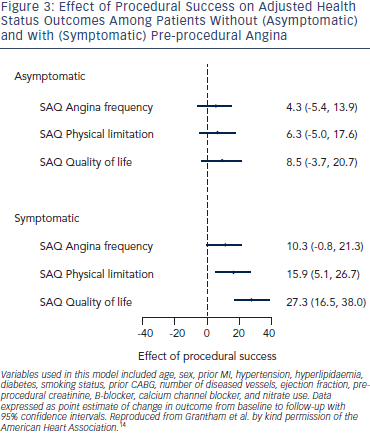
Cost Effectiveness
As is detailed above, objective evidence from properly conducted randomised trials that CTO intervention decreases mortality is not available at present. As such, a formal assessment of cost effectiveness of CTO intervention versus medical therapy is difficult. Indeed, CTO PCI in the majority of cases is only offered to those patients who continue to be symptomatic despite optimal medical therapy. However, utilising a Markov model examining a hypothetical cohort of 10,000 patients (see Figure 3), Gada et al. have constructed a detailed analysis of the relative cost benefits of CTO intervention in patients with CCS class III-IV angina. Based on a mean age of 60 years, with a procedural success rate (68 %) and overall complication rate derived from contemporary published literature and based upon costs derived from CTO procedures conducted in an outpatient setting, the authors were able to calculate cost benefit model over a five-year period.27 They concluded that a successful CTO PCI strategy incurred higher costs than optimal medical therapy ($31,512 vs $27,805), but accumulated more quality-adjusted lifeyears (QALYs). Overall, CTO-PCI appeared to be cost effective, with a ratio of $9,505/QALY, which is well below the accepted conventional threshold of $50,000/QALY.
With the addition of further variables, including the costs of a repeat CTO procedure that increased the overall procedure success rate to 80 %, the cost per QALY rose to $14,047/QALY, which is still dominant.
Importantly, however, the cost calculations are based on procedures conducted in a single centre between 2010–11. This is before the more widespread adoption of technology such as the Corsair® microcatheter and the Crossboss™ dissection re-entry system. The use of these technologies demonstrably increases the overall rate of procedure success6,7, but they are associated with a increase in overall procedural cost. This may be balanced with a reduced need for a second CTO-PCI procedure and reduced rate of target lesion revascularisation (TLR) but data is not available to fully establish true cost effectiveness of these technical advances in CTO revascularisation.